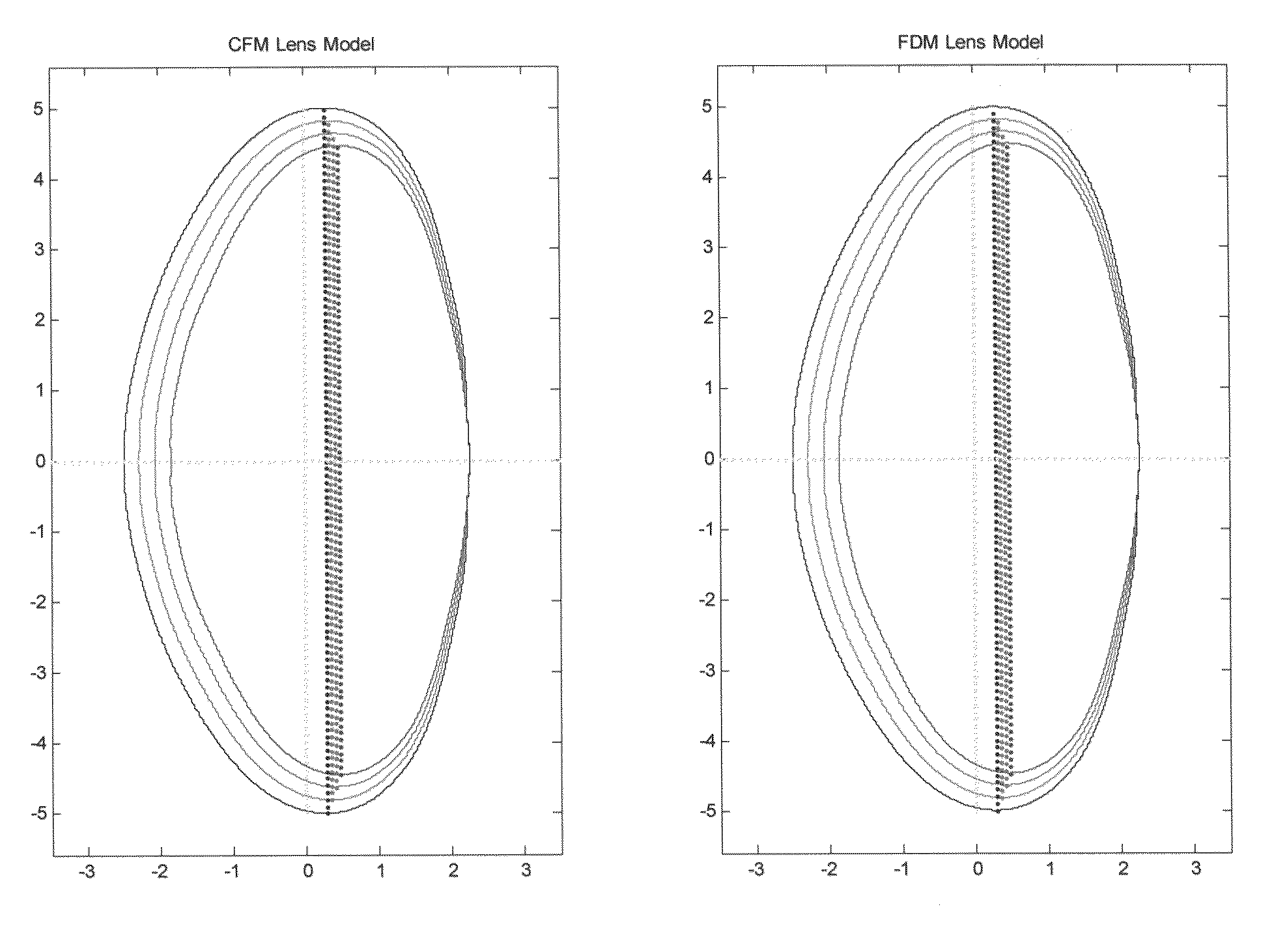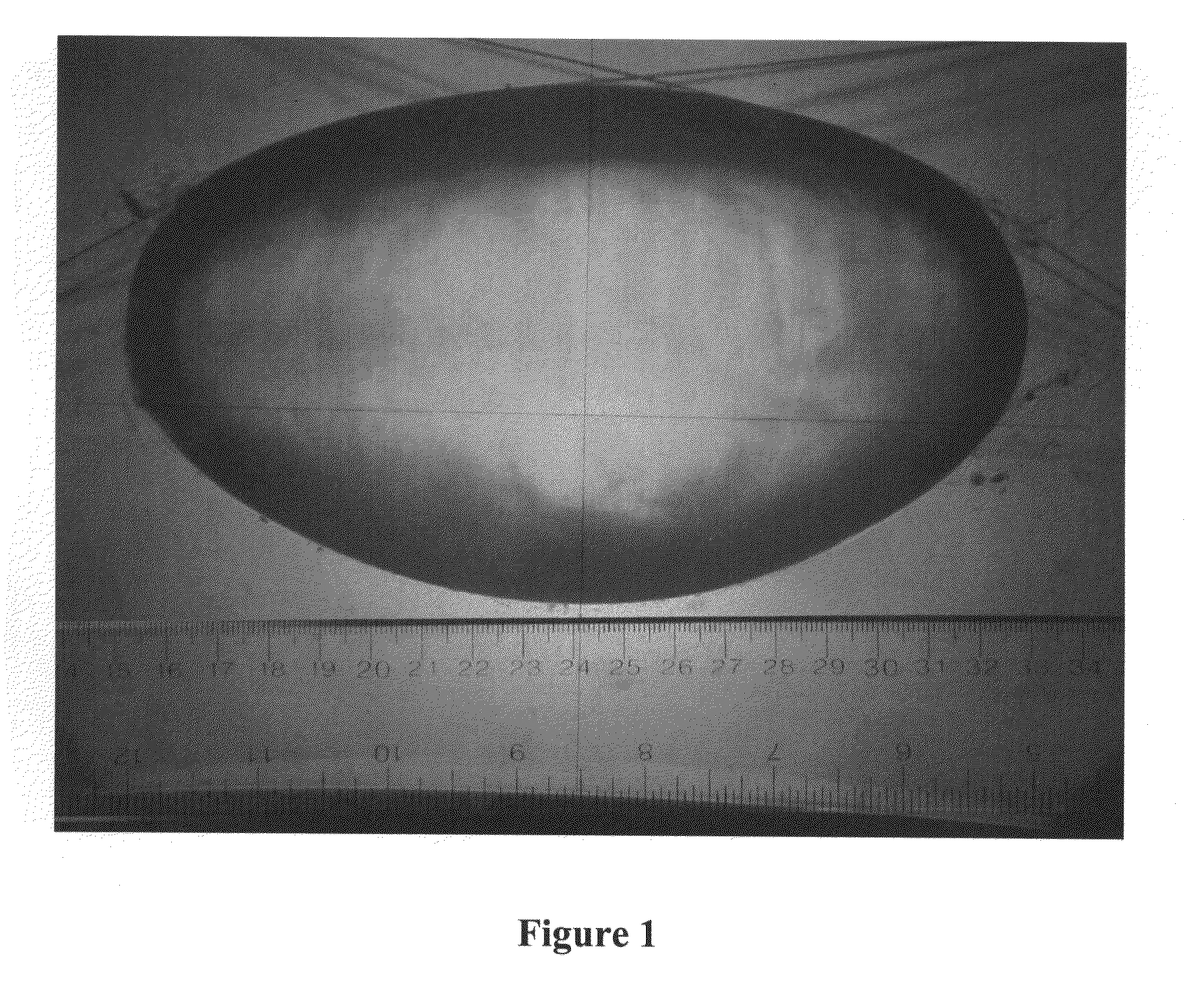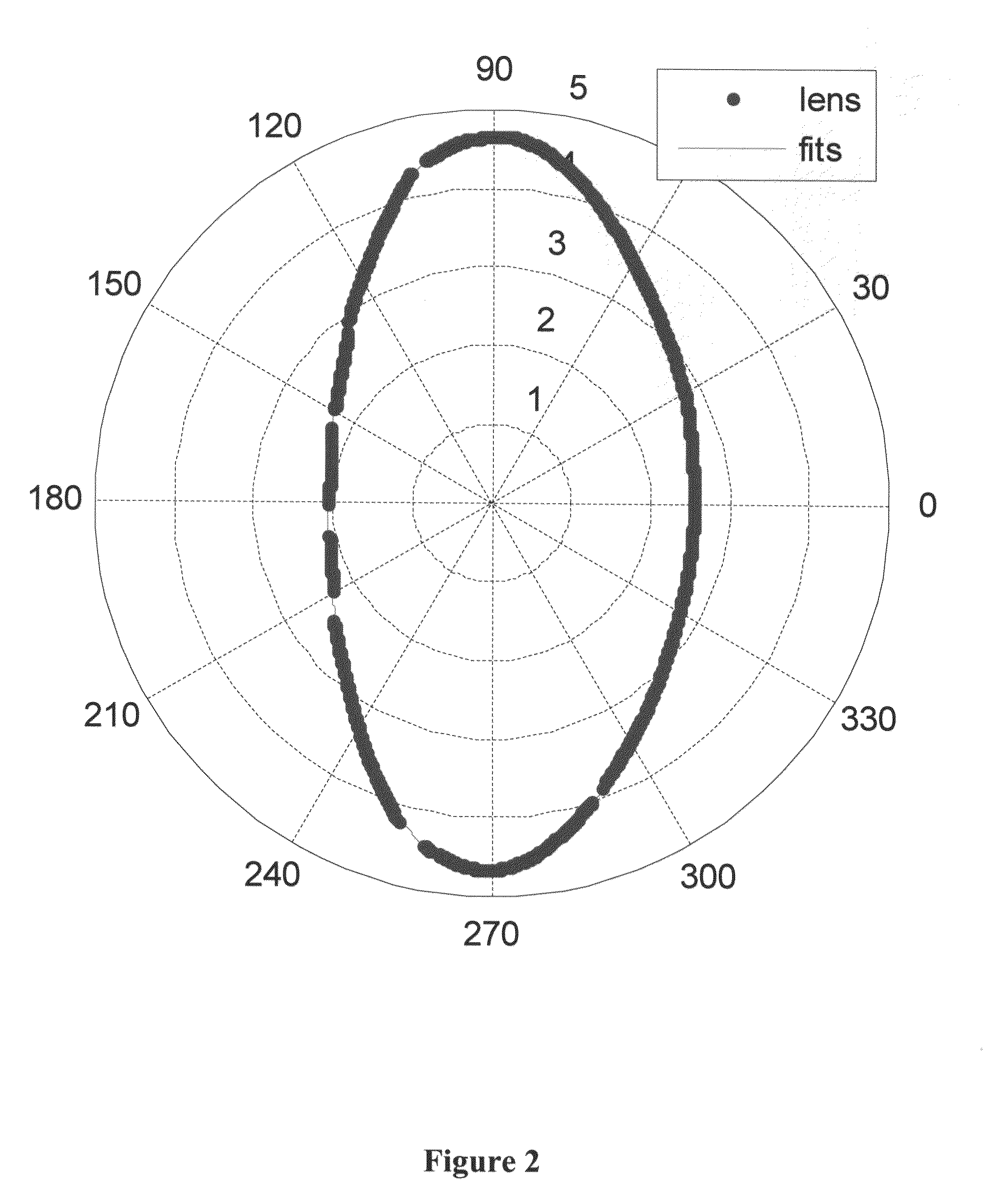Method for characterizing lenses
a technology of lens and characterization method, which is applied in the field of lens design and lens characterization, can solve the problems of insufficient degree of freedom to be able to faithfully describe, and the inability to ensure continuity around the entirety of the crystalline lens, so as to achieve any degree of representation accuracy and greater precision
- Summary
- Abstract
- Description
- Claims
- Application Information
AI Technical Summary
Benefits of technology
Problems solved by technology
Method used
Image
Examples
examples
[0049]The next two sections describe a procedure by which the crystalline lens may be prepared so geometrical data relating to shape may be obtained. This is provided as an example of how such preparation and data may be conducted. Given the following description, the individuals skilled in the art should then be able to identify other methods by which lens samples may be prepared and geometrical data obtained.
Lens Preparation
[0050]All human eyes were obtained and used in compliance with the guidelines of the Declaration of Helsinki for research involving the use of human tissue. The 22 crystalline lenses used in this study were from whole, intact cadaver eyes, in the age range of 26 to 82, obtained from American Eye Banks. The postmortem time varied from 1 to 5 days, during which time the whole eyes (globes) were stored at 2-6° C. in sealed jars on a bed of gauze, moistened with saline. Ophthalmic surgeons removed the cornea and iris using an operating microscope. The lens was extr...
PUM
 Login to View More
Login to View More Abstract
Description
Claims
Application Information
 Login to View More
Login to View More - R&D
- Intellectual Property
- Life Sciences
- Materials
- Tech Scout
- Unparalleled Data Quality
- Higher Quality Content
- 60% Fewer Hallucinations
Browse by: Latest US Patents, China's latest patents, Technical Efficacy Thesaurus, Application Domain, Technology Topic, Popular Technical Reports.
© 2025 PatSnap. All rights reserved.Legal|Privacy policy|Modern Slavery Act Transparency Statement|Sitemap|About US| Contact US: help@patsnap.com



